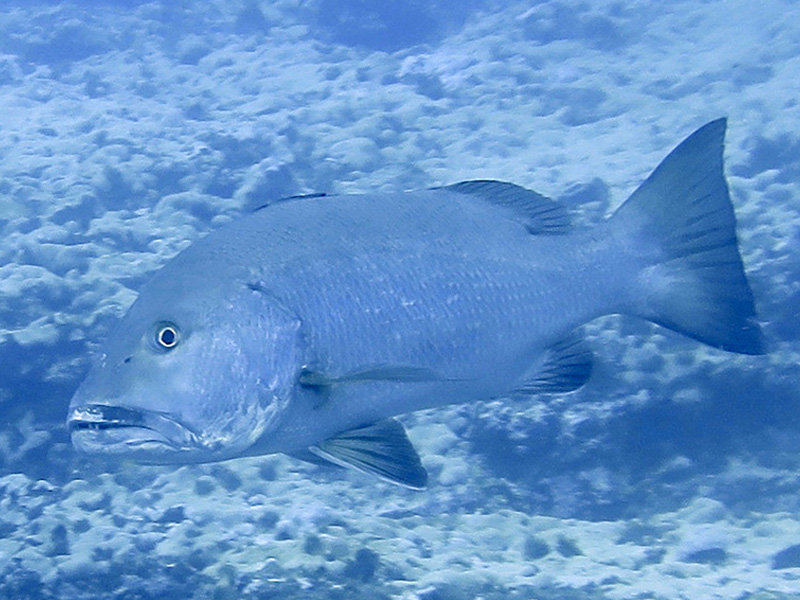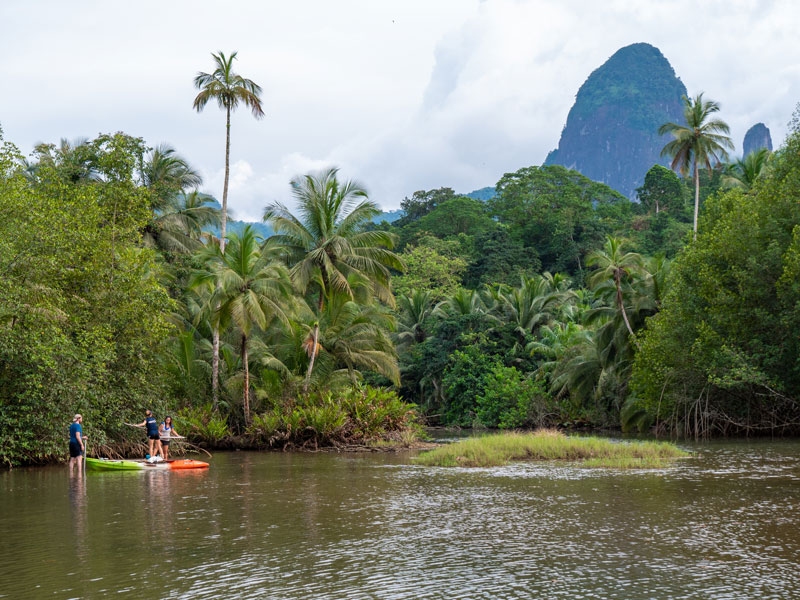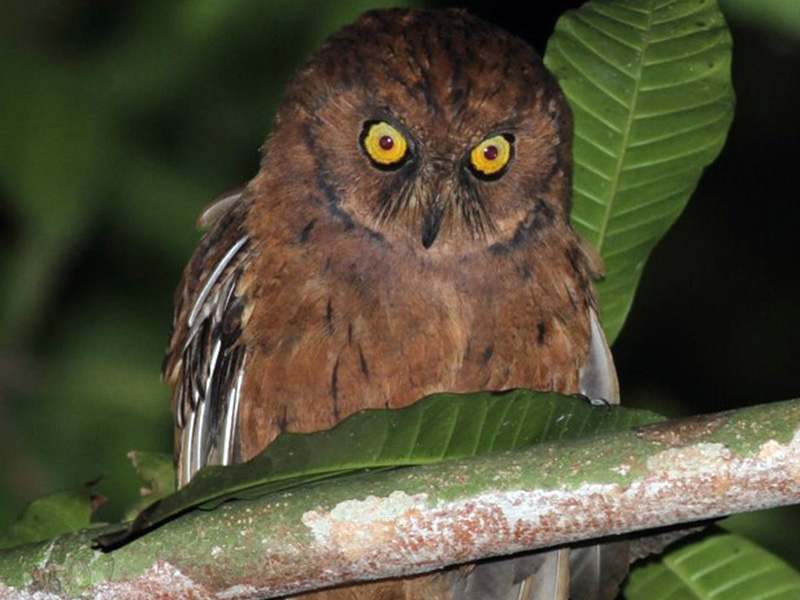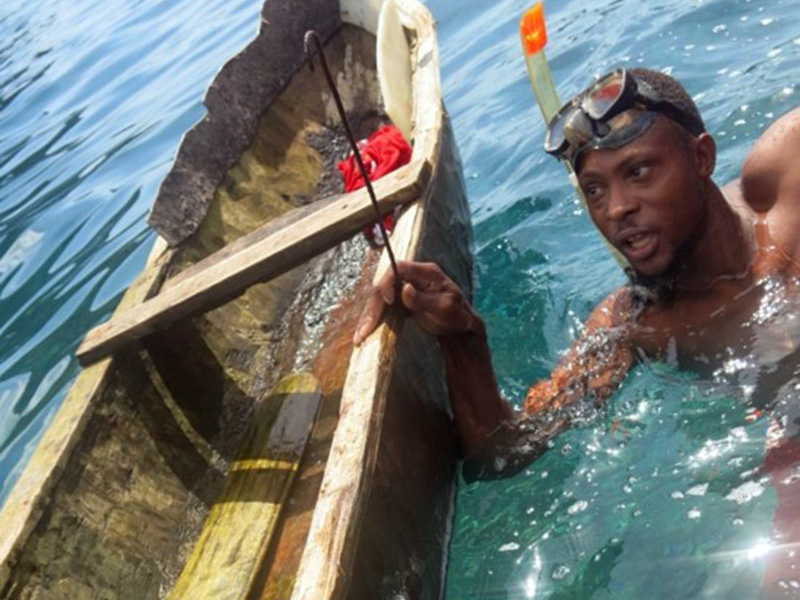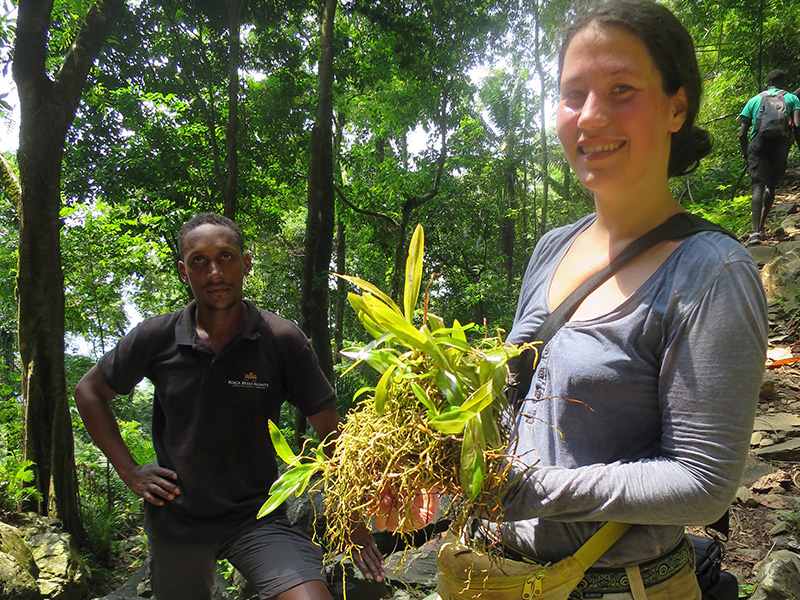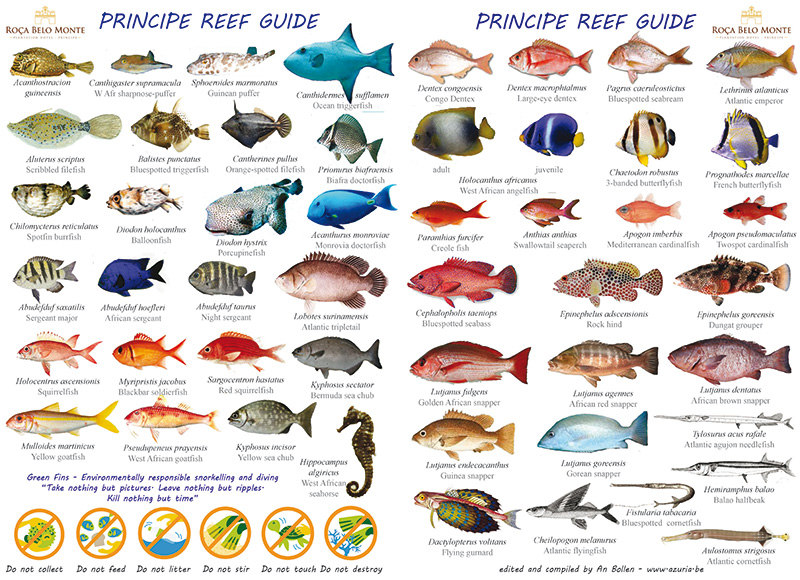Fish Reproduction and maturity
Context: The fisheries sector in Príncipe employs one in four inhabitants, including both fishermen and fish vendors (palaîes), women who engage in fish processing (drying and salting) and selling. Annual consumption of fish on Príncipe is 40kg/capita, which is one of the highest in Africa. Príncipe fishermen practice only artisanal fishing in canoes and praos canoas. In recent years there is an increasing migration from semi-industrial boats from São Tomé into Príncipe waters and every year many new São Toméans settle on Príncipe.
While there is no scientific evidence, there are clear indications of increased pressure on the marine resources. Most reefs have few or no large predators, it is very difficult to encounter sharks when diving and the few remaining large fish are scared. Fishermen acknowledge that there is less fish, the fish is smaller and they need to go out much further to fish. Landing surveys of the project Omali Vida Non (The Sea, Our Life) show that for some species, the catch size is under reproductive age. Mapping further indicates that in the North several fishing areas (Raso, Gale, Cinco Monte) are visited every day by multiple canoes. This means that fish stocks are not able to recover and if there is no dynamic fishing the resources will decline irreversibly.
Demersal or resident fish are under greatest pressure and fish stocks assessments indicate that these were fished at 69% of their capacity (2000-2012). Coastal and oceanic pelagic fish depend on healthy reefs for food and thus also on the presence of demersal fish. Pelagic fish will stay away if the reefs are degraded. While it is much harder to protect pelagic species that disperse out at sea, it is possible to protect demersal fish and their habitats in coastal waters, which will have a positive side-effect on the pelagic species as well
Aim: Understanding the life cycle of five commercially important demersal fish species in order to formulate better fishing regulations to keep these populations healthy and the food chain in balance.
Methods: If we know how often a female produces eggs, how many eggs she produces each time, and how many years she is likely to live, we can calculate how many eggs she would produce over her life time. Identifying the reproductive size of a species is key to be able to ensure only sexually mature individuals are caught. Researchers will collaborate closely with fishermen to obtain specimens for laboratory research on their reproductive biology. Suggested species include (to be confirmed):
| African Red Snapper | Lutjanus agennus | Corvina preta | Data deficient |
| Golden African Red Snapper | Lutjanus fulgens | Vermelho terra/Corvina vermelha | Data deficient |
| Dungat grouper | Ephinephelus goreensis | Cherne | Partial data |
| Blue spotted seabass | Cephalopholis taeniops | Bobo guema | Partial data |
| Blue spotted seabream | Pagrus caeruleostictus | Pargo | Data available |
Expected output:
- Known life cycles and reproductive biology of five key demersal species
- Recommendations for fishing regulations (size quota, seasonal closures or other)
Collaboration:
- National and Regional Ministry of Fisheries
- Guillermo Porriños – University of Exeter, Darwin Project ‘Omali Vida Non’
- Identify research institute with fisheries experience (demersals)


